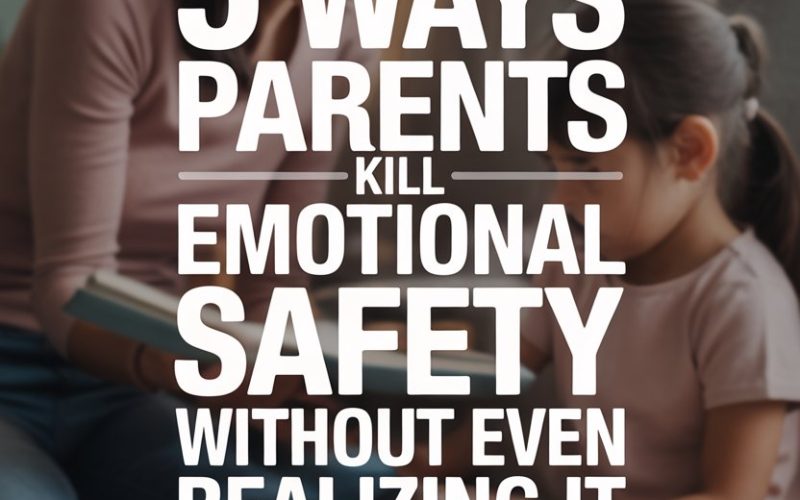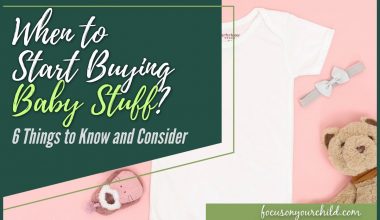Ever had one of those moments where your child’s chin starts quivering and you realise you have no idea what you actually said wrong?
Emotional safety isn’t printed on nappy packs and doesn’t come with a manual, but it makes all the difference in whether kids feel secure or shut down.
Even the most loving parents can accidentally stomp all over it, usually while trying to help.
Sound familiar? Here are five of the sneakiest ways parents squash emotional safety—plus what you can do to fix it before bedtime.
1. Dismissing Feelings with “You’re Fine” or “Don’t Be Silly”
Every parent has been tempted to brush off a scraped knee or a sulking session with a breezy “You’re alright!” (sometimes with a hint of wishful thinking).
It’s not malicious—no one wants to see their child upset. But those little phrases can pile up and teach kids their feelings are a bit much.
When kids hear “stop crying” or “you’re overreacting,” the message isn’t just “cheer up.” It’s “your emotions are inconvenient.”
Long term, this can make children less likely to confide in you about anything from playground drama to truly serious problems.
Research shows that when children have their emotions validated—even the ones that seem minor—they build better resilience and confidence (source).
What to do instead? Try a simple, “That looks like it hurt,” or “I get why you’re upset.”
You don’t have to agree that a broken biscuit is a tragedy; you just need to acknowledge that, to a six-year-old, it probably is. That tiny pause to validate can make all the difference.
2. Overreacting to Mistakes or Misbehaviour
Who hasn’t dropped a mug or spilt juice and braced for impact? If you catch yourself tensing up, you’re not alone.
When parents yell, threaten, or punish harshly for mistakes—especially the honest ones—kids absorb the idea that slip-ups are disasters, not learning curves.
Kids don’t need endless praise for every blunder.
But if every mistake is greeted with a dramatic sigh or a lecture worthy of the Supreme Court, children start hiding errors. They might even start lying to avoid the fallout.
According to child psychologists, a calmer approach helps children develop accountability and problem-solving skills.
Swap out the “How many times have I told you?!” for “Looks like that didn’t work as planned—what could you try next time?”
Even a simple “Oops, these things happen,” goes a long way. You’ll save your voice (and maybe your crockery).
3. Making Love or Attention Conditional
Ever caught yourself saying, “I’ll read you a story if you’re good,” or “No hugs until you apologize”? Welcome to the club. It’s human to want to motivate good behaviour.
But using affection or your presence as a carrot (or a stick) sends the message that love must be earned.
This can create a lot of anxiety for kids—imagine if your partner only spoke to you when you unloaded the dishwasher properly.
Research points out that conditional parenting tactics can make children more anxious, less secure, and sometimes even more defiant.
Try to separate behaviour from acceptance. “I love you, even when you make mistakes,” is a phrase that can be oddly hard to say, but it matters.
Set firm boundaries, but keep the affection flowing. Kids need to know they’re valued even when they’re not exactly pleasant to be around.
4. Fixing Everything Instead of Listening
The urge to leap into superhero mode is strong. Child comes home upset? Parents offer solutions. “Don’t worry about that friend—make a new one!” “If you just practice more, you’ll get it.”
Not terrible advice, perhaps, but often not what a child needs in the heat of the moment.
When we jump straight to fixing, we miss the chance to simply listen. Children start to believe their feelings are problems to be solved, not experiences to be shared.
Sometimes, they just need to vent about the maths test, not hear a rousing speech on times tables.
Paediatricians and child development experts recommend using phrases like, “That sounds tough—want to talk about it?” or “I’m here if you need a hug.”
When kids know their emotions are welcome, they’re more likely to keep sharing with you. (Even when their problems get bigger than a playground spat.)
5. Modelling Emotional Suppression
Think about your own childhood—did you ever see an adult openly admit, “I’m really sad today,” or “I’m frustrated and need a breather”?
Many parents believe showing emotions is a sign of weakness or will frighten their kids, so they slap on a brave face and soldier on.
Children are astute little detectives. They notice when your words and your mood don’t match.
If you consistently bury your emotions, you’re teaching your kids to do the same. This can lead to a cycle where emotions are something to hide, not express.
According to mental health professionals, children benefit from seeing adults handle their emotions in healthy ways.
It’s okay to say, “I’m a bit grumpy because I had a tough day, but I still love you.” Or, “I need a minute to calm down before we talk.”
You’re not burdening your child—you’re giving them a blueprint for their own emotional life.
Small Changes, Big Impact
No one expects parents to be perfect. (If you find one who is, hand them a medal and check if they’re actually a robot.)
Emotional safety isn’t about banishing mistakes—it’s about becoming a safe harbour, even on the stormy days.
Try picking one shift to practise tonight: validate a feeling, keep affection steady, catch yourself before overreacting. You might be amazed by how quickly your child responds.
Children don’t remember every lecture. They remember how they felt—loved, accepted, and safe. Isn’t that the best legacy any parent could hope for?





